THE CONVERSATION
Cats first finagled their way into human hearts and homes thousands of years ago – here’s how
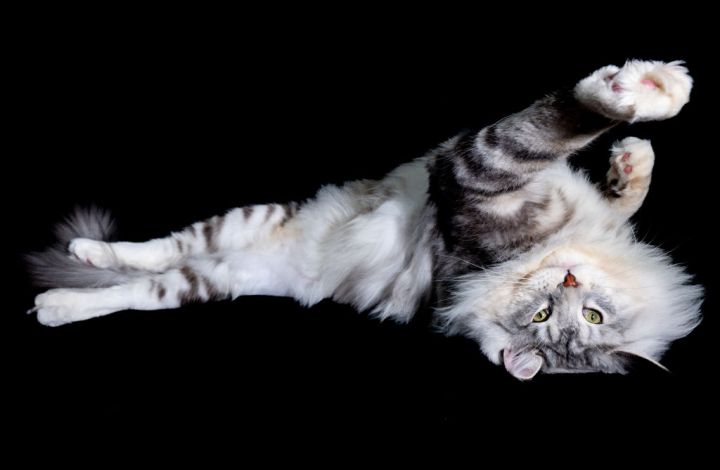
Natural selection changed just 13 genes to separate your Felix and Fluffy from their African wildcat ancestor.
A few years ago, I had the opportunity to go on a safari in southern Africa. One of the greatest thrills was going out at night looking for predators on the prowl: lions, leopards, hyenas. As we drove through the darkness, though, our spotlight occasionally lit up a smaller hunter – a slender, tawny feline, faintly spotted or striped. The glare would catch the small cat for a moment before it darted back into the shadows.
Based on its size and appearance, I initially presumed it was someone’s pet inexplicably out in the bush. But further scrutiny revealed distinctive features: legs slightly longer than those of most domestic cats, and a striking black-tipped tail. Still, if you saw one from your kitchen window, your first thought would be “Look at that beautiful cat in the backyard,” not “How’d that African wildcat get to New Jersey?”
As an evolutionary biologist, I’ve spent my career studying how species adapt to their environment. My research has been reptile-focused, investigating the workings of natural selection on lizards. Yet, I’ve always loved and been fascinated by felines, ever since we adopted a shelter cat when I was 5 years old. And the more I’ve thought about those African wildcats, the more I’ve marvelled at their evolutionary success. The species’ claim to fame is simple: The African wildcat is the ancestor of our beloved household pets. And despite changing very little, their descendants have become among the world’s two most popular companion animals. (Numbers are fuzzy, but the global population of cats and dogs approaches a billion for each.)
Clearly, the few evolutionary changes the domestic cat has made have been the right ones to wangle their way into people’s hearts and homes. How did they do it? I explored this question in my book The Cat’s Meow: How Cats Evolved from the Savanna to Your Sofa.
Why the African wildcat?
Big cats – like lions, tigers and pumas – are the attention-grabbing celebrities of the feline world. But of the 41 species of wild felines, the vast majority are about the size of a house cat. Few people have heard of the black-footed cat or the Borneo bay cat, much less the kodkod, oncilla or marbled cat. Clearly, the little-cat side of the feline family needs a better PR agent.
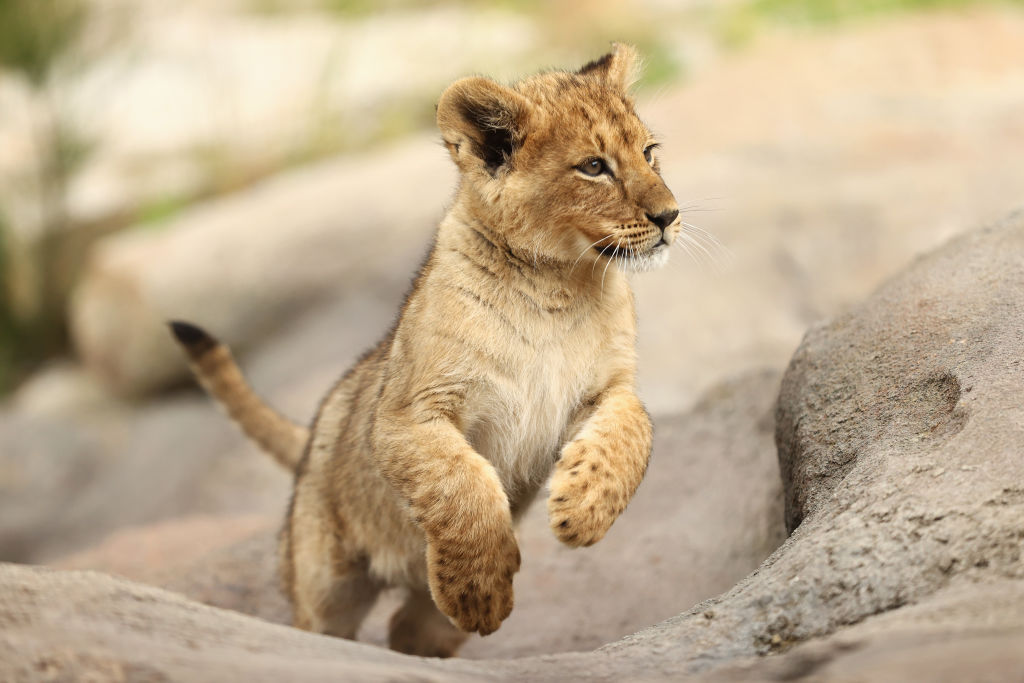
A lion cub explores the African Savannah enclosure at Taronga Zoo on November 04, 2021 in Sydney, Australia. Five lion cubs to mother ‘Maya’ and father ‘Ato’ make their debut to the public at twelve weeks old at Taronga Zoo. The lion cubs have been named by zoo supporters, the public and the zoo’s carnivore keepers Khari, Luzuko, Malika, Zuri and Ayanna. (Photo by Cameron Spencer/Getty Images)
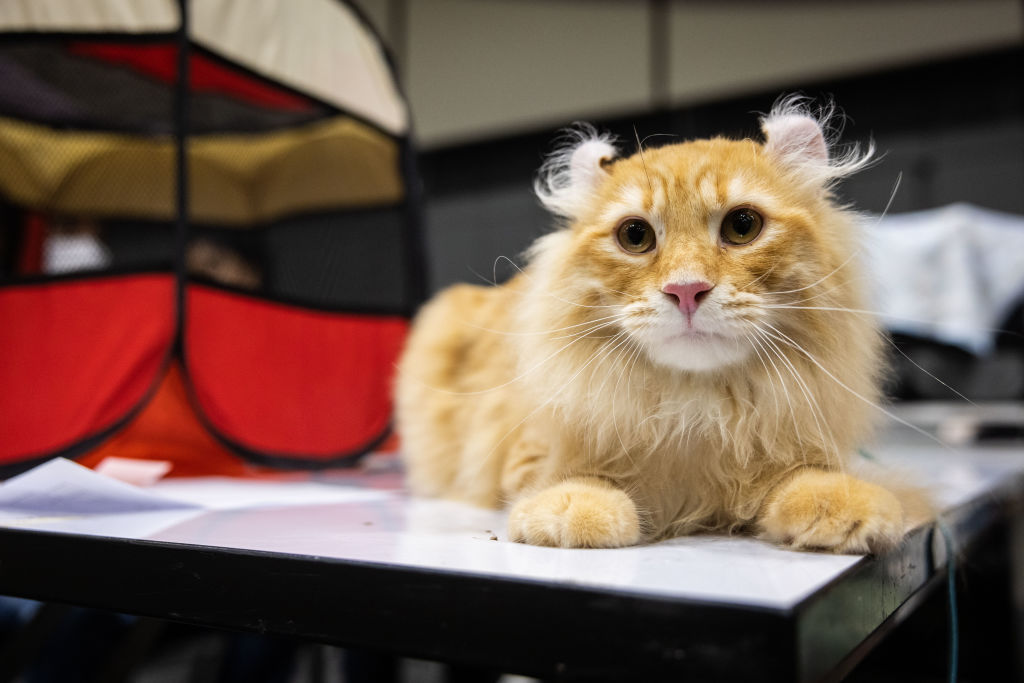
An orange cat sits in the waiting area backstage before competing in an orange cat competition on July 02, 2023 in Bangkok, Thailand. Thailand’s Cat Fanciers’ Club hosted an orange cat competition during a Cat Expo at Bangkok’s Central Westgate Mall. Over 70 cats were judged on fur color, health and friendliness. A one year old cat named Chuan Long, after the Chinese Kung Fu boxer, took home first prize. (Photo by Lauren DeCicca/Getty Images)
In theory, any of these species could have been the progenitor of the domestic cat, but recent DNA studies demonstrate unequivocally that today’s housecats arose from the African wildcat – specifically, the North African subspecies, Felis silvestris lybica. Given the profusion of little pusses, why was the North African wildcat the one to give rise to our household companions?
In short, it was the right species in the right place at the right time. Civilization began in the Fertile Crescent about 10,000 years ago, when people first settled into villages and started growing food. This area – spanning parts of modern-day Egypt, Turkey, Syria, Iran and more – is home to numerous small cats, including the caracal, serval, jungle cat and sand cat. But of these, the African wildcat is the one that to this day enters villages and can be found around humans. African wildcats are among the friendliest of feline species; raised gently, they can make affectionate companions. In contrast, despite the most tender attention, their close relative the European wildcat grows up to be hellaciously mean.
Read The Cat Whisperer and I in Daily Maverick
Given these tendencies, it’s easy to envision what likely happened. People settled down and started raising crops, storing the excess for lean times. These granaries led to rodent population explosions. Some African wildcats – those with the least fear of humans – took advantage of this bounty and started hanging around. People saw the benefit of their presence and treated the cats kindly, perhaps giving them shelter or food. The boldest cats entered huts and perhaps allowed themselves to be petted – kittens are adorable! – and, voilà, the domestic cat was born.
Where exactly domestication occurred – if it was in a single place and not simultaneously throughout the entire region – is unclear. But tomb paintings and sculptures show that by 3,500 years ago, domestic cats lived in Egypt. Genetic analysis – including DNA from Egyptian cat mummies – and archaeological data chart the feline diaspora. They moved northward through Europe (and ultimately to North America), south deeper into Africa and eastward to Asia. Ancient DNA even demonstrates that Vikings played a role in spreading felines far and wide.
What cat traits did domestication emphasize?
Domestic cats possess many colours, patterns and hair textures not seen in wildcats. Some cat breeds have distinctive physical features, like munchkins’ short legs, Siameses’ elongated faces or Persians’ lack of muzzle. Yet many domestics appear indistinguishable from wildcats. Only 13 genes have been changed by natural selection during the domestication process. By contrast, almost three times as many genes changed during the descent of dogs from wolves.
There are only two ways to indisputably identify a wildcat. You can measure the size of its brain – housecats, like other domestic animals, have evolved reductions in the parts of the brain associated with aggression, fear and overall reactivity. Or you can measure the length of its intestines – longer in domestic cats to digest vegetable-based food provided by or scavenged from humans.
The most significant evolutionary changes during cat domestication involve their behaviour. The common view that domestic cats are aloof loners couldn’t be further from the truth. When lots of domestic cats live together – in places where humans provide copious amounts of food – they form social groups very similar to lion pride. Composed of related females, these cats are very friendly – grooming, playing with and lying on top of each other, nursing each other’s kittens, and even serving as midwives during birth.
To signal friendly intentions, an approaching cat raises its tail straight up, a trait shared with lions and no other feline species. As anyone who has lived with a cat knows, they use this “I want to be friends” message toward people as well, indicating that they include us in their social circle.
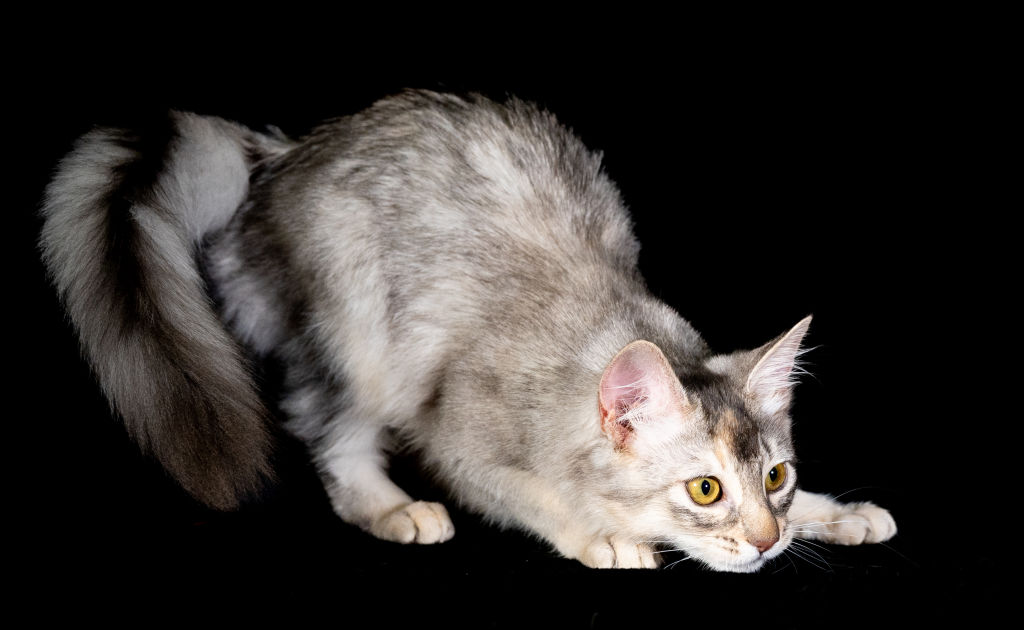
Tessa aka Spotty Dotty, a Silver Tortie Somali cat is seen in a studio portrait during the GCCF Shropshire Cat Club Championship Show at Fenton Manor Sports Complex on February 04, 2023 in Stoke on Trent, England. (Photo by Shirlaine Forrest/Getty Images)
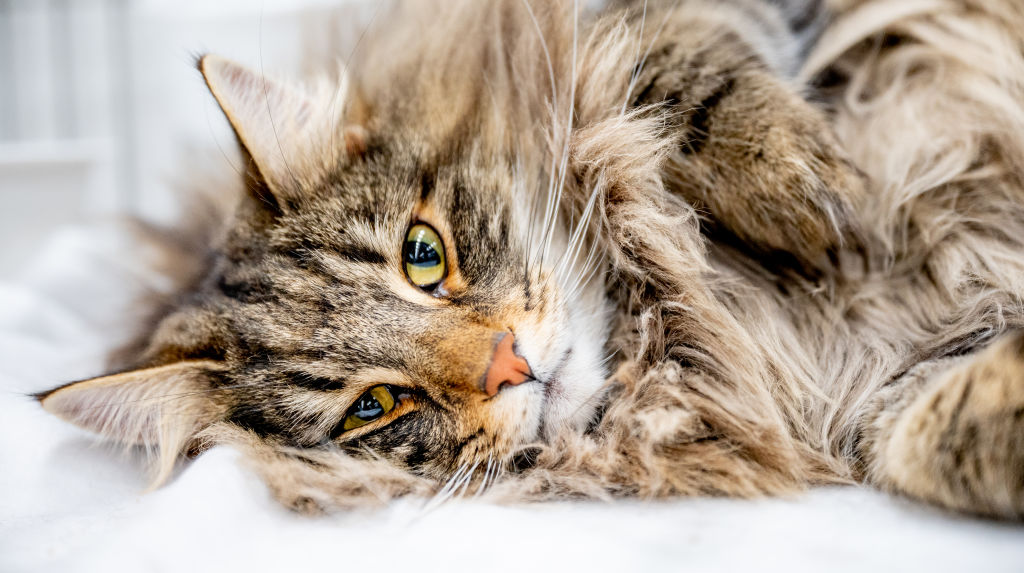
Zivvanaz Washington, a Norwegian Forest cat relaxes during the GCCF Shropshire Cat Club Championship Show at Fenton Manor Sports Complex on February 04, 2023 in Stoke on Trent, England. (Photo by Shirlaine Forrest/Getty Images)
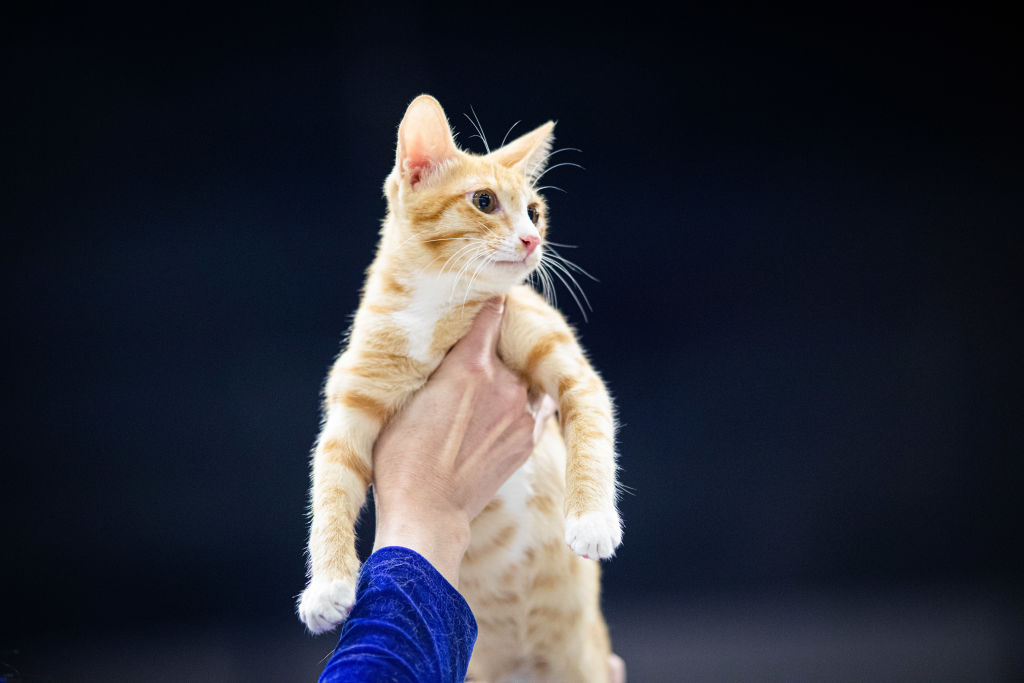
A young orange cat is held up to the judges during an orange cat competition on July 02, 2023 in Bangkok, Thailand. Thailand’s Cat Fanciers’ Club hosted an orange cat competition during a Cat Expo at Bangkok’s Central Westgate Mall. Over 70 cats were judged on fur color, health and friendliness. A one-year-old cat named Chuan Long, after the Chinese Kung Fu boxer, took home first prize. (Photo by Lauren DeCicca/Getty Images)
Evolution of a master manipulator
Household cats are quite vocal to their human companions, using different meows to communicate different messages. Unlike the tail-up display, however, this is not an example of their treating us as part of their clan. Quite the contrary, cats rarely meow to one another.
The sound of these meows has evolved during domestication to more effectively communicate with us. Listeners rate the wildcat’s call as more urgent and demanding (“Mee‑O‑O‑O‑O‑O‑W!”) compared with the domestic cat’s more pleasing (“MEE‑ow”). Scientists suggest that these shorter, higher-pitched sounds are more pleasing to our auditory system, perhaps because young humans have high-pitched voices, and domestic cats have evolved accordingly to curry human favour. Cats similarly manipulate people with their purrs. When they want something – picture a cat rubbing against your legs in the kitchen while you open a can of wet food – they purr extra loudly. And this purr is not the agreeable thrumming of a content cat, but an insistent chainsaw br-rr-oom demanding attention.
Read The Cats I’ve loved and lost in Daily Maverick
Scientists digitally compared the spectral qualities of the two types of purrs and discovered that the major difference is that the insistent purr includes a component very similar to the sound of a human baby crying. People, of course, are innately attuned to this sound, and cats have evolved to take advantage of this sensitivity to get our attention. Of course, that won’t surprise anyone who’s lived with a cat. Although cats are very trainable – they’re very food motivated – cats usually train us more than we train them. As the old saw goes, “Dogs have owners, cats have staff.” DM
This story was first published in The Conversation
Jonathan Losos is a William H. Danforth Distinguished University Professor and Arts & Sciences at Washington University in St. Louis


















Comments - Please login in order to comment.